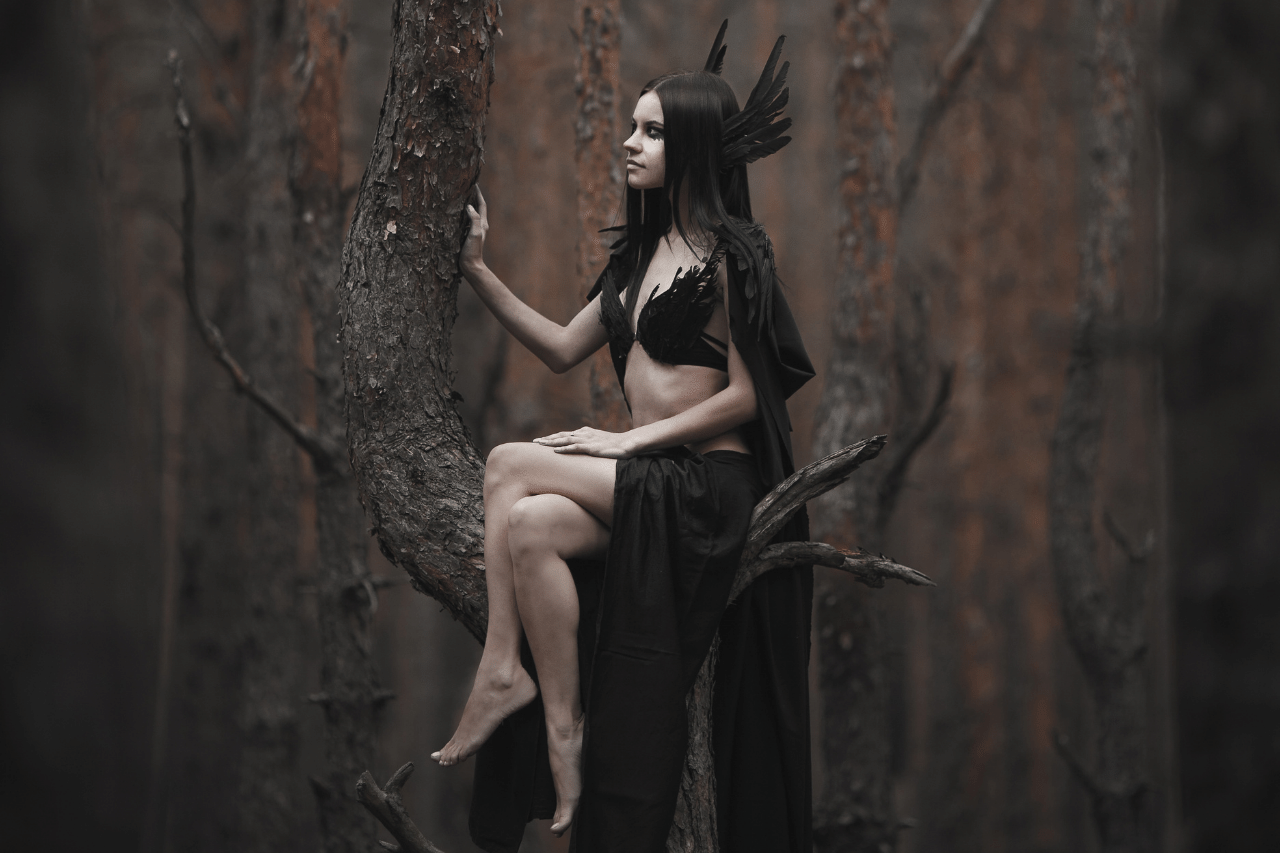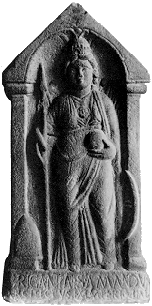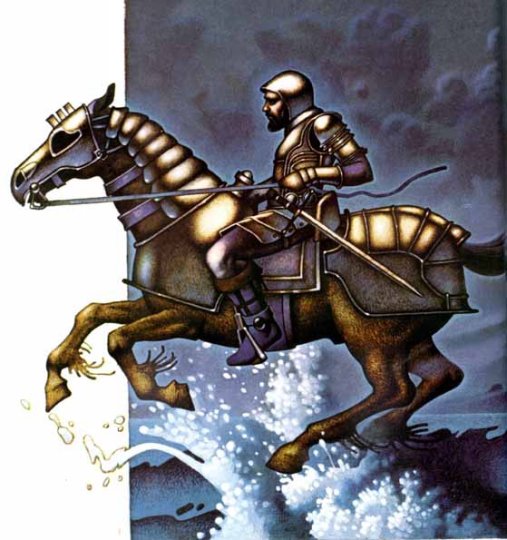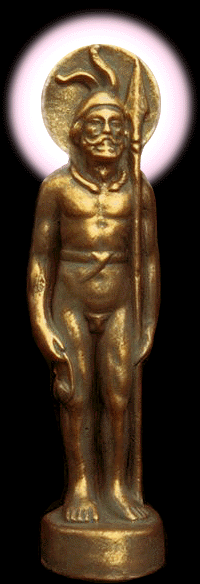Tuatha Dé Danann
The Tuatha Dé Danann ("People of the Goddess Danu") were one of the mythical races which settled in Ireland before the arrival of the Milesians, the ancestors of the modern Gaels. The Dananns were descendants of the goddess Danu. Her son Dagda was the most powerful leader of the Dananns.
The Tuatha Dé Dananns were a race of deities as well as a race of heroes. They were skilled in art and science, poetry and magic.
They were said to come from four mythical cities: Falias, Gorias, Finias and Murias. When they came to live in Ireland, the Dananns received four magic treasures or talismans, one from each city. Before the Tuatha Dé Danann migrated to Ireland, they had learned all their skills from four wizards/bards (druids) from these four cities. Morfesa from Falias, Esras from Gorias, Semias from Murias and Uiscias from Findias. (See the Druids of Danu)
After the Milesians defeated the Dananns, the Dananns either retreated to Tir na n-Og ("Land of Youth") or they continued to live on the land with the Milesians, but their homes (subterranean palaces) were hidden by magic from the eyes of mortals. Their homes were commonly called Sidhe (síd or sídh) or the Otherworld. Another name for the Tuatha Dé Danann was the áes sídhe or the "People of the Sídhe".
In the Otherworld, the Danann remained young and seemingly immortal. Immortal in the sense, they could live a very long life and remain young, but they could be killed or destroyed, just like any mortal.
There were frequent visits of the Dananns with the mortals. Sometimes they aided mortals, while other times they sought their destruction. Sometimes they sought marriage with mortals. Most of the times, the Dananns would come to the surface and meet their lovers, but other times the mortals were allowed to live with them.
In the Ulster Cycle, the Tuatha Dé Danann were still seen as Celtic deities. However, in the Fenian Cycle, the Dananns had degenerated into nothing more then fey people; in another words, the Dananns became the "Fairy People". The Tuatha Dé Danann became frequently associated with fairies. Because of Christian influences in the myths, some of them died of old age when they left the Otherworld; so, they were baptised after leaving the Otherworld but before their death.
It should be noted that the fairies in Celtic myths (especially Irish, Welsh and Arthurian myths) had nothing to do with tiny pixies with wings that are found in folklore and children's fairy tales, like Tinkerbell in Peter Pan or the Fairy Godmother in Cinderella. The fairies found here were human with supernatural powers. Modern interpretations of fairies tend to prettify them, particularly during the Victorian period (19th century) in Britain.
In early Irish and Welsh literature, they could be tall or short, beautiful or ugly. They could be benevolent beings, but at other times they could be frighteningly cruel or malign. For instance, Morrigan and Morgan le Fay would not be considered fairies in the modern sense.
If you are interested in the mythical history of the people who settled in Ireland, read the Book of Invasions.
Please note that I have limited the number of Tuatha Dé Danann who appeared in Irish myths. I have only provided a description for those who play an important role in Irish mythology, because there are just too many Dananns for my small page.
Triple Goddesses
The number three was important in all Celtic traditions. Gods and goddesses were usually grouped in threes, or they represented three different aspects of the same deity.
Here you will find a list of triple goddesses, and other goddesses found in Irish mythology.
In addition, these goddesses included Badb, Macha, and Nemain.
Irish Gods
Genealogy
Please note that the genealogy of the Tuatha Dé Danann is rather confusing. (Okay, downright chaotic.) I have relied on the Lebor Gabala Erenn and Cath Maige Tuired as my sources. These sources can be conflicting. The Lebor Gabála can contradict and conflict with itself in different passages, sometimes giving different parents to a Danann.
Another reason for the confusion is that the Lebor Gabála survived in several different manuscripts, and the book I used tried to put all the translations together in one volume. See Bibliography on the Lebor Gabála and Cath Maige Tuired.
The only Danann I am certain of - Lugh (son of Cian and Ethlinn), Angus, Bodb Derg and Brigit - were all the children of Dagda.
The point is that with the genealogy of the Tuatha Dé Danann, accuracy is not possible. So please don't take this out on me (about the three different family trees), if you are confused. I'm a little confused myself.
Non-Danann Deities
Related Pages
Fomoire (Fomorians)
Firbolgs
By Jimmy Joe










